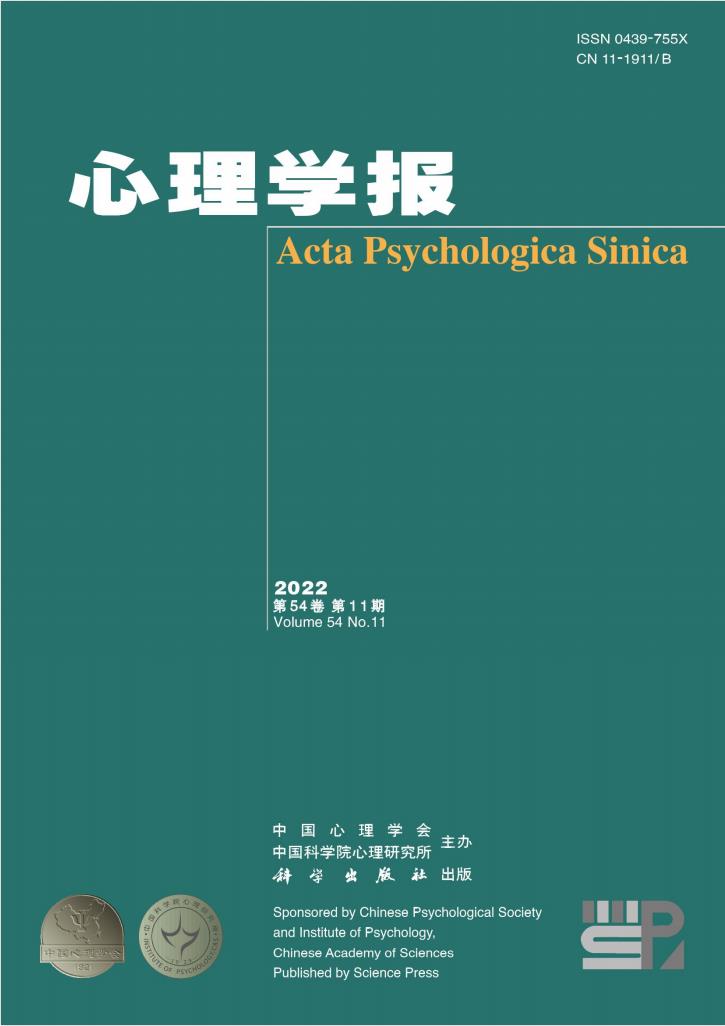N170 adaptation effect of the sub-lexical phonological and semantic processing in Chinese character reading
IF 1.3
4区 心理学
Q3 PSYCHOLOGY, MULTIDISCIPLINARY
引用次数: 3
Abstract
The event-related potential (ERP) studies have revealed a component (N170) near tempo-occipital electrodes was sensitive to visual words. However, its role in word reading is still controversial. A common view is that the N170 engaged in the visual/orthographic processing, whereas some evidence has shown the N170 involved in phonological and semantic processing. By taking advantage of the Chinese writing system's ideographic property, the current study directly examined whether the N170 was sensitive to the phonological and semantic processing in reading Chinese characters. Two ERP experiments were conducted in a neural adaption paradigm by manipulating the repetition of the sub-lexical phonetic/semantic radical. The ERP data were collected while participants performed a phonological judgment task on the 4th character after silently reading the four characters consecutively. The phonological similarity (Experiment 1) and semantic similarity (Experiment 2) were manipulated among the four characters. Experiment 1 examined the neural adaption of the four characters sharing the phonetic radical (e.g., 敏 , 侮 , 悔 , 莓 ), the character's pronunciation (e.g., 妹 , 枚 , 镁 , 莓 ), both of them (e.g., 酶 , 梅 , 霉 , 莓 ), or neither (e.g., 淮 , 崛 , 郎 , 莓 ) respectively. Experiment 2 examined the neural adaption of the four characters sharing the semantic radical (e.g., 狡 , 狂 , 猜 , 狒 ), the character's meaning (e.g., 豹 , 鹿 , 羚 , 狒 ), of them (e.g., 狮 , 狼 , 狐 , 狒 ), , 崛 , 郎 , 狒 ) In both experiments, the results showed a significant neural adaption at N170 in all of the four conditions. The amplitude of the N170 observed in the 1st character decreased in the 2nd – 4th characters. In Experiment 1, the N170 neural adaptation at the left PO7 electrode was sensitive to the repetition of the phonetic radical, and the repetition of the character's pronunciation, but not to the repetition of both. These results indicated the left mid-fusiform gyrus might be sensitive to the visual/orthographic and phonological processing but not to the orthography-to-phonology mapping in Chinese character reading. In Experiment 2, the N170 neural adaption at the left PO7 electrode was only sensitive to the repetition of the character’s meaning, which indicated the semantic processing might modulate the left N170 in character reading. The N170 neural adaption at the right PO8 electrode was sensitive to the repetition of the semantic radical and the character's meaning, which suggested that right N170 was involved in visual/orthographic and semantic processing in reading characters. In sum, the findings showed that the N170 was involved in the visual/orthographic processing and engaged in the phonological and semantic processing in Chinese character reading. Furthermore, the left N170 was sensitive to the character's phonological and semantic information, whereas the right N170 was sensitive to the character’s meaning and its semantic radical.N170亚词语音语义加工在汉字阅读中的适应效应
事件相关电位(ERP)研究表明,颞枕电极附近的一个成分(N170)对视觉单词敏感。然而,它在单词阅读中的作用仍然存在争议。一种常见的观点是N170参与视觉/拼写处理,而一些证据表明N170参与语音和语义处理。利用汉语书写系统的表意特性,本研究直接考察了N170在阅读汉字时是否对语音和语义处理敏感。通过操纵亚词汇语音/语义部首的重复,在神经适应范式中进行了两个ERP实验。当参与者在连续默读四个字符后,对第四个字符进行语音判断任务时,收集ERP数据。对四个汉字的语音相似度(实验1)和语义相似度(实验2)进行了处理。实验1检验了共享语音部首的四个字符(例如。,敏 , 侮 , 悔 , 莓 ), 字符的发音(例如。,妹 , 枚 , 镁 , 莓 ), 它们两者(例如。,酶 , 梅 , 霉 , 莓 ), 或者两者都不(例如。,淮 , 崛 , 郎 , 莓 ) 分别地实验2检验了共享语义部首的四个字符(例如。,狡 , 狂 , 猜 , 狒 ), 字符的含义(例如。,豹 , 鹿 , 羚 , 狒 ), 其中(例如。,狮 , 狼 , 狐 , 狒 ), 崛 , 郎 , 狒 ) 在这两个实验中,结果显示,在所有四种条件下,N170都具有显著的神经适应。在第1个字符中观察到的N170的振幅在第2-4个字符中减小。在实验1中,左侧PO7电极处的N170神经适应对声旁的重复和字符发音的重复敏感,但对两者的重复不敏感。这些结果表明,在汉字阅读中,左梭状中回可能对视觉/拼写和语音处理敏感,但对拼写-语音映射不敏感。在实验2中,左侧PO7电极处的N170神经适应仅对字符含义的重复敏感,这表明语义处理可能在字符阅读中调节左侧N170。右侧PO8电极的N170神经适应对语义部首的重复和字符的含义敏感,这表明右侧N170参与了阅读字符的视觉/拼写和语义处理。总之,研究结果表明,N170参与了汉字阅读中的视觉/拼写处理,并参与了语音和语义处理。此外,左边的N170对字符的语音和语义信息敏感,而右边的N170则对字符的含义及其语义词根敏感。
本文章由计算机程序翻译,如有差异,请以英文原文为准。
求助全文
约1分钟内获得全文
求助全文
来源期刊

心理学报
Psychology-Psychology (all)
CiteScore
1.70
自引率
13.30%
发文量
1612
期刊介绍:
Acta Psychologica Sinica (ISSN 0439-755X) is a scholarly journal sponsored by the Chinese Psychological Society and the Institute of Psychology, Chinese Academy of Sciences, and published monthly by the Science Press.
Acta Psychologica Sinica has been included in many important national and international indexing systems such as SCOPUS (Elsevier), ESCI (Web of Science), PsycINFO (APA), CSCD. It is the flagship journal of the Chinese Psychological Society that publishes peer-reviewed original empirical studies and theoretical articles spanning the entire spectrum of scientific psychology.
Acta Psychologica Sinica publishes high-quality research that investigates the fundamental mechanisms of mind and behavior and aims to deliver scientific knowledge to enhance our understanding of culture and society. It welcomes submissions of manuscripts reporting research that is up-to-date, scientifically excellent, and of broad interest and significance.
 求助内容:
求助内容: 应助结果提醒方式:
应助结果提醒方式:


